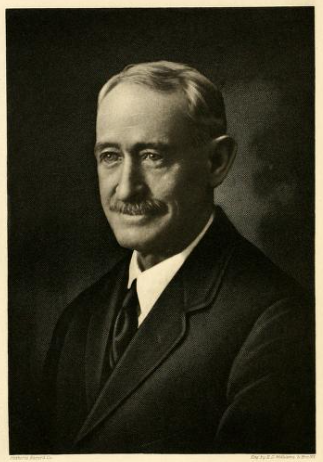The following is from a work-in-progress about the history of Fullerton. You can support my ongoing research and writing on Patreon.
An important family that settled in the area that would become Fullerton was the Des Granges.
In Fullerton, a Pictorial History, Bob Ziebell writes: “In 1873, Otto des Granges, a native of Prussia, Germany, the eighth child in a family that had fled France during the Huguenot Uprising, purchased 80 acres of land bounded by State College Boulevard and Acacia Avenue on the east and west respectively and by Chapman Avenue and Commonwealth Avenue on the north and south.
The property was devoted first to general farming and later to walnut and orange production…Ranch access was off Acacia and the family built the home at 2000 East Wilshire Avenue–once known as the oldest in Fullerton. The southwest quarter of the property plays host to Ladera Vista Junior High.
Otto des Granges died in 1898 (at age 90) but he left behind a family–his widow, Josephine, and children John C., Joseph P., Otto, and Mrs. C. W. Crall.”
Josephine died in 1914, at age eighty-six.
Otto’s son Joseph des Granges was instrumental in setting up Anaheim’s modern electric light system, and setting up a grist mill in that town.

Paul Des Granges, Otto Jr.’s son, who was born in 1891 in Fullerton, was interviewed in 1971 by Anne Riley for the Fullerton College Oral History program. Here are recollections of Fullerton over the years from a man who was here from almost the very beginning of the town.
On Who Owned Fullerton Land before the Amerige Brothers
“Stearns’ Ranch was all over here at one time. They owned quite a bit of that property here. It’s an old Spanish land grant is what it was. You’d have to dig into some of California’s history to get who Abel Stearns was, but he married a Spanish woman. He was a Yankee, and he knew how to get things.”
On Working the Brea Olinda Oil Fields
“You had to work in those days! Well, if you got a Sunday off once in a while, you was in luck…We had twelve hour days, 365 days a year.”
On Charles C. Chapman (orange rancher/Fullerton’s first mayor)
“He had his own private drive-way for quite a few years, coming through there…State College to Acacia. He used to have to close it off at each end about once a year, a day or two, to hold it…When it [Fullerton] was incorporated, a good Christian member [Chapman] employed enough men to vote for him…that he knew would vote the right way for him…built the Christian church for them.”
On Who Provided Water During the 1933 Earthquake
“I knew very well that the water tank out by the stallion barn had come down, because water had all come down through there and down through the yard. And we didn’t have any water there at the house that night, except a couple of ten gallon cans that we got down in Mexican Town. [At this time, Mexican Americans lived in segregated work camps called “Citrus Towns” or “Mexican Towns”] They were on the hillside below the place…and we got a couple of ten gallon milk cans full of water, and that’s all. We had twenty-one people there in the yard that night.”
On Hippies
“A lot of these hippies that are coming in here, they’ve got to be fed or something, or taken care of, and they’ve got to have the money enough to pay the rent for the rent for the thing…I don’t know.”
On the Decline of the Citrus Industry
“Well, they call it progress. I guess so…The tax bill got too big. Orchards…you couldn’t make decent sized oranges to save your soul in this part of the country. We don’t know to this day, for an honest fact, any more than to say that it’s just the smog that did it, that’s all.”
Leave a comment